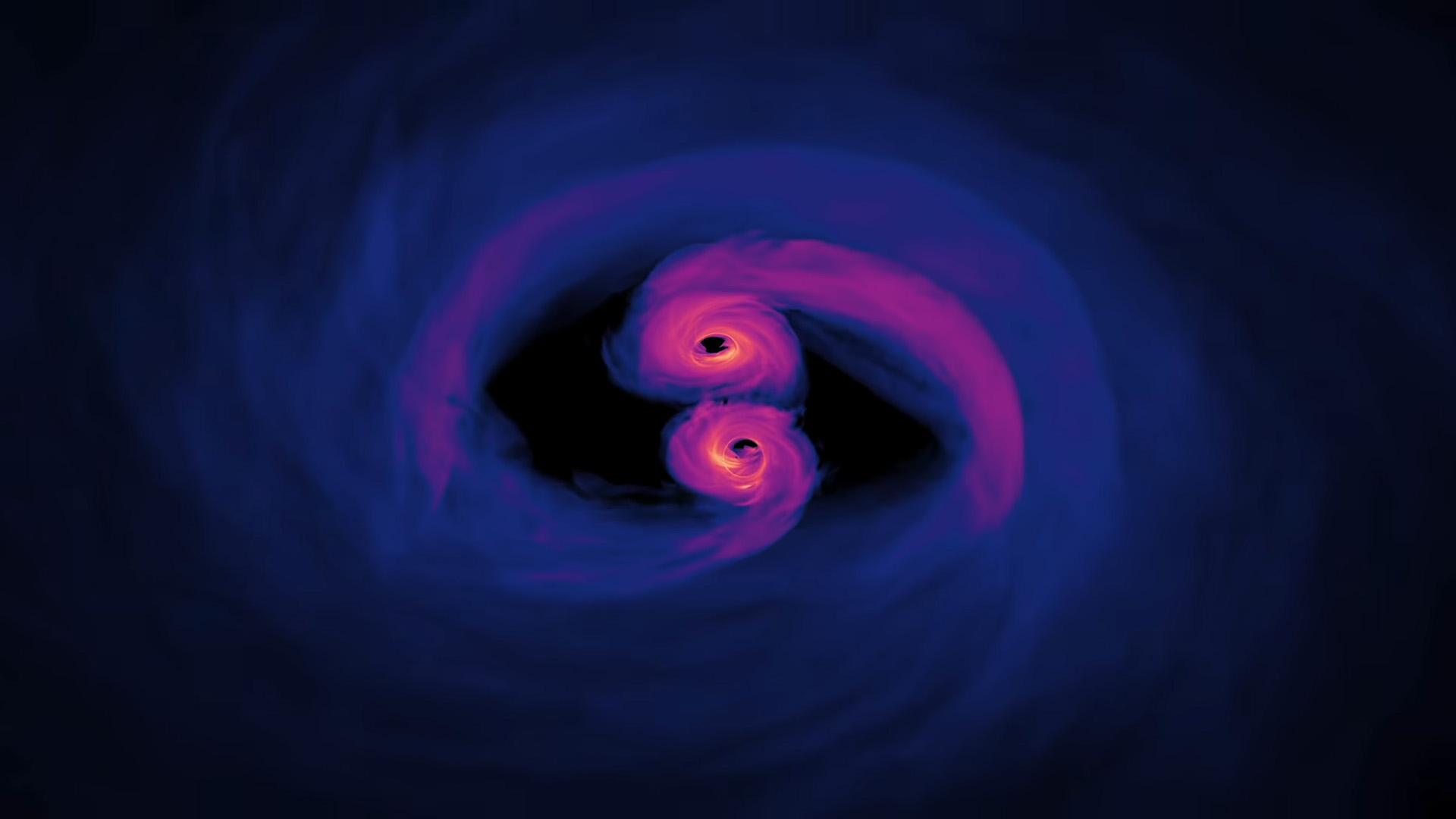One of the most eagerly anticipated events in contemporary astronomy may be present in the strange behavior of a galaxy about a billion light-years away.
The SDSS J1430+2303 galaxy’s light fluctuations strangely resemble two supermassive black holes with a total mass of about 200 million Suns that are on the verge of colliding with one another.
In cosmic terms, the concept of “imminent” frequently lasts for a whole lifetime. Fortunately, astronomers believe that during the next three years, if the signal is actually the consequence of massive black holes, they will merge.

It might be our greatest chance yet to see the collision of two supermassive black holes. However, it is still unclear whether that is the fundamental cause of J1429+2303. We should keep observing the peculiar galaxy, say scientists, to see if we can positively identify it.
In 2015, the first evidence of two black holes colliding was discovered, ushering in a brave new age in astronomy. Due to the gravitational waves that these enormous events cause to ripple through space-time, numerous more detections have been made since that time.

To date, almost all of these mergers have been binary pairs of black holes with masses comparable to individual stars. There’s a very good reason for this. LIGO and Virgo, the gravitational wave instruments responsible for the detections, are designed for this mass range.
For our existing observatories, the frequency range is too low to detect the more ponderous ripples produced by inspiralling and colliding supermassive black holes, which are millions to billions of times more massive than the Sun.
Still, it would be really delightful to witness two supermassive black holes combine. Scientists anticipate a massive outpouring of light across the spectrum, even in the absence of a detector that can detect low frequency gravitational waves.

We may learn a great deal about how these events unfold from the information included in that outburst. Although the exact mechanism behind supermassive black hole growth is unknown, there are some indications that binary mergers may be one of the possible causes.
Supermassive black holes are known to exist in the cores of galaxies, and we have seen that at the centers of these post-merger galaxies, in addition to pairs and groups of galaxies colliding, supermassive black holes are also revolving around one another in mutual, decaying orbits. These are deduced from oscillations in the light these galaxies emanate from their galactic centers, which occur on predictable timeframes and seem to indicate an orbit.

This brings up J1430+2303 once more. The University of Science and Technology of China’s Ning Jiang headed a group of astronomers who earlier this year published a document to the public server arXiv revealing some really peculiar behavior. The galactic nucleus oscillations, which had previously lasted for around a year, have been getting shorter and shorter over the course of three years, down to just one month.
However, it’s not entirely clear that what is happening at the heart of J1430+2303 is the result of a black hole binary at all, never mind one that is about to kaboom. Galactic nuclei are strange places, throwing out signals that are difficult to interpret, meaning it’s possible something else may be causing the variability in the heart of J1430+2303.
To try to get to the bottom of the matter, astronomers turned to X-ray wavelengths. Using data from a range of X-ray observatories, covering a time period of 200 days, a team led by Liming Dou of Guangzhou University in China has attempted to identify high-energy signatures that we would expect to see in a close supermassive black hole binary on a decaying orbit.They did see variations in the X-ray light emitted by the galaxy, as well as a type of emission associated with iron falling onto a black hole, which the team detected with a 99.96 percent confidence level from two different instruments. This emission can be associated with binary supermassive black holes; however, the team could not measure the “smoking gun” characteristics that would confirm a black hole binary.Analysis of radio observations published in July were also inconclusive. So it appears we’re still not 100 percent sure about what’s happening with J1430+2303.
What we are able to state with confidence is that something very strange seems to be happening at the galaxy’s center. Above all, it’s a mystery, and a very juicy one; whether it’s a supermassive black hole binary on the brink of collision or not, J1430+2303 seems to warrant closer, more detailed attention.
The paper has been accepted for publication in Astronomy & Astrophysics, and is available on arXiv.








